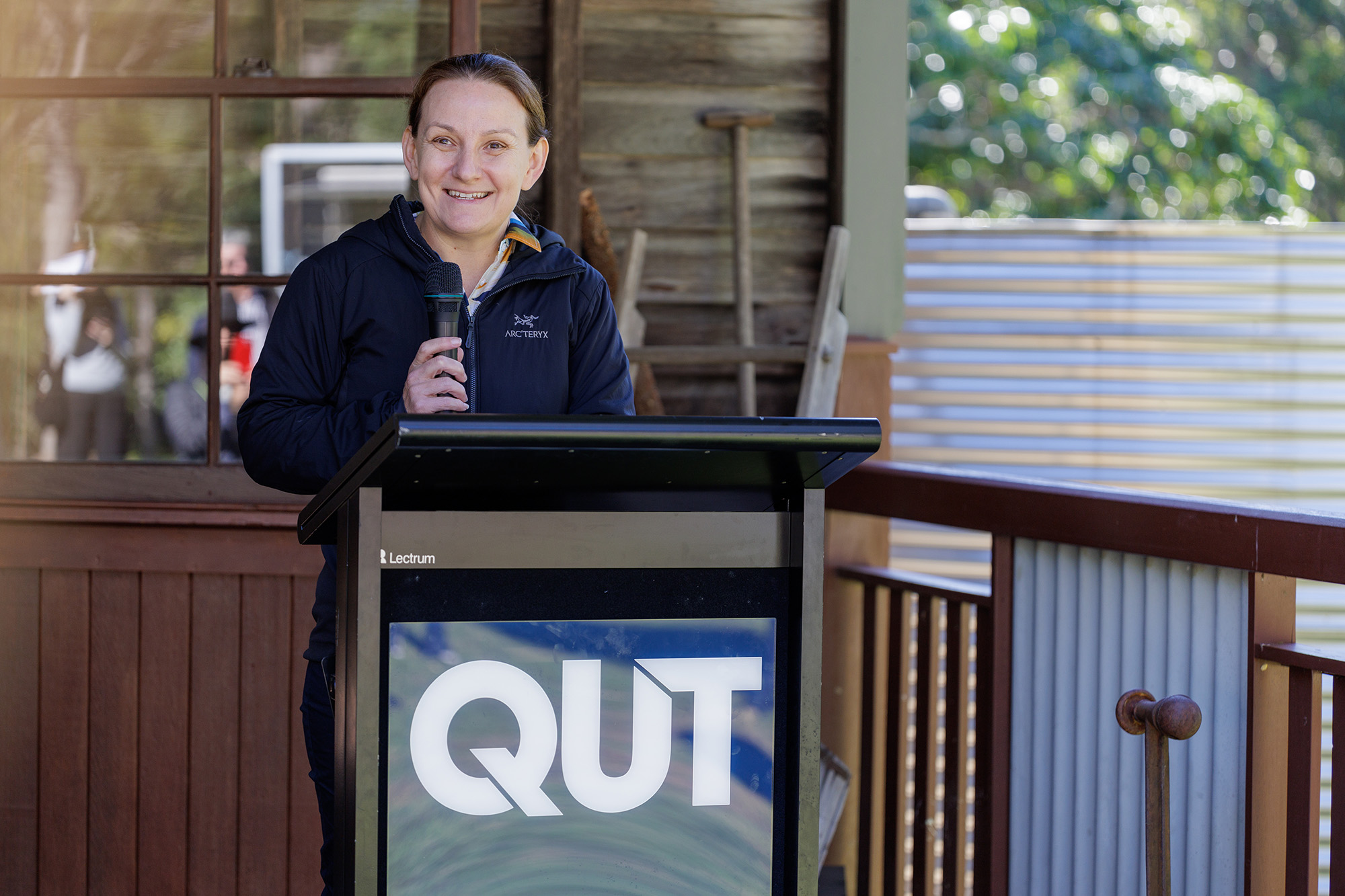A new, interactive eco-trail has been opened by Queensland Chief Scientist, Professor Kerrie Wilson, in Samford Valley, north-west of Brisbane.
The self-guided Engaging Science Trail, launched yesterday, is a joint initiative between QUT’s Samford Ecological Research Facility (SERF) and Australia’s Terrestrial Ecosystem Research Network (TERN).


Queensland Chief Scientist Professor Kerrie Wilson said the Queensland Government was pleased to support the trail through the Engaging Science Grants program as it offered a “wonderful science experience” for Queenslanders.
“We want to encourage everyone to appreciate science, be aware of the great research happening in ecology and sustainability in Queensland and build their skills in that area,” she said.
“Congratulations to all the organisations involved in developing this facility and helping to raise science literacy in Queensland.”
The picturesque 51-hectare SERF property is one of 10 TERN national “SuperSites” of important biomes with intensive ecosystem monitoring equipment.
It is used by university researchers, under and postgraduate students to investigate the climate, environment, soil, water, vegetation and wildlife. Other organisations, such as school and community groups, can access the site by appointment.


SERF manager Lorrelle Allen said the new trail was developed by ecological researchers and site experts as a lasting contribution to Queensland’s scientific literacy.
The event was also a showcase of SERF’s research infrastructure and included presentations and demonstrations in the fields of carbon sequestration, environmental drone research, long-term environmental monitoring, conservation of threatened invertebrates, and art science collaborations.
“The trail includes information about scientific research projects, with participants able to scan QR codes at 12 different stops along the way,” Ms Allen said.
“But it is also just really beautiful with creek crossings, open pastures, Melaleuca forest, and a magnificent blue gum tree that is estimated to be between 300 and 400 years old.
“This event is also a great opportunity to open the doors to the public to showcase the property’s natural beauty as well as the resources and infrastructure at SERF that contribute to important ecosystem monitoring.”

TERN Australia director Dr Beryl Morris said the Engaging Science Trail allowed environmental science to be accessed, studied, enjoyed and questioned by students, government and industry.
“TERN is all about long-term ecosystem monitoring,” she said.
“Better than all the instruments we use are the people who help by making observations and recording changes in the environment in a consistent way.
“We hope the people who walk the Engaging Science Trail continue to do so for many years – and let us know what they see changing so that it can be recorded in Australia’s environmental history.”
The SERF property was bequeathed to QUT by renowned Queensland entomologist Dr Elizabeth Nesta Marks AO and is managed by the university.

The SERF SuperSite is unique in that it is located on the edge of a fast-growing city, with data helping to understand impacts of urbanisation on natural ecosystems.
Infrastructure on SERF includes a TERN flux station that measures the change of carbon dioxide and water in an ecosystem over time; acoustic sensors detecting animal species through the sounds they produce as part of a network of 360 sensors gathering data nationally; and pitfall traps to monitor ground-dwelling amphibians, reptiles, mammals and invertebrates.
